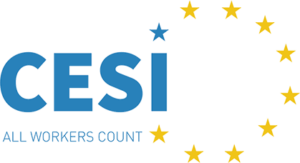2022-03-10 11:54
On March 4, CESI participated in the fifth webinar of the joint EU co-funded multisectoral social dialogue project “The role of social partners in preventing third-party violence and harassment at work”, in which it is a partner organization.
The online meeting aimed at examining ways to protect and compensate victims of violence and harassment and assessing the value of the multisectoral Guidelines to tackle third-party violence and harassment at work which were adopted in 2010. Trade unionists including CESI’s members, as well as managers and researchers, had the opportunity to exchange on timely questions such as: Which is the legal basis for the compensation of the victims of violence and harassment at work at both EU and international level? To what extent have Guidelines proved useful regarding the protection and compensation of victims of violence and harassment? Should the Guidelines be updated to include a reference to sanctions against perpetrators of violence and harassment?
Jane Pillinger, independent researcher and consultant for the project, summarized the key conclusions of the previous webinar of the project which was devoted to the challenges and risks of digitalization on third-party violence and harassment at work, and then, presented the European and international legal background of the protection of victims. The researcher presented the provisions of the EU directives regulating harassment and sexual abuse; the rights, support and protection of victims of crime; as well as the objectives of the proposed directive on gender-based violence and analyzed the ILO Conventions and Recommendations that are applicable. She also gave an overview, based on her research findings and the survey, on examples of remedies, protection and compensation initiatives for victims of workplace violence, as well as victims of domestic violence, like paid-leave in come countries, counselling, sanctions for perpetrators and other type of support for victims/survivors.
Trade unionists from several EU countries shared with the audience national examples of initiatives aimed at the protection of victims. Dr. Alessandra Menelao from the Italian Labour Union UIL presented multi-sectoral initiatives against all types of violence in Italy. Kremena Dimitrova from the Bulgarian Federation of Transport Trade Unions FTTUB talked about best practices in the transport sector. Yordan Krasev from the Bulgarian Union of Teachers SEB shared the latest developments regarding the revision of the Bulgarian Penal Code.
The webinar ended with a fruitful exchange of views on the effectiveness of the multisectoral social partners Guidelines and possible improvements.
The speakers’ presentations of this fourth webinar, as well as a report in English, are available here.
For CESI, this webinar constituted the continuation of an awareness-raising action on the topic started with its own project on third-party violence at work (2019-2020) and particularly including an own #NOVIOLENCEATWORK campaign based on a video and manifesto against third-party violence at work, be it offline, or online.
About the multisectoral European social partner project
“The role of social partners in preventing third-party violence and harassment at work” is a joint project of HOSPEEM, EPSU, CEMR, CESI (co-applicants) and ETF, ETNO, ETUCE, EUPAE, UITP (associated organizations), co-funded by the European Commission, for the years 2021 to 2023.
The project aims to assess the effectiveness at the national level of the EU multi-sectoral social partners’ Guidelines to tackle and prevent third-party violence and harassment related to work (2010), which CESI signed in 2018, as part of the TUNED delegation, for the central government administrations’ sector. It will identify areas for improvements and explore possibilities for reviewing the Guidelines’ content and nature considering recent legislative developments and the ILO Convention 190 on Violence and Harassment (2019). The final objective of the project is to become an awareness-raising tool on a gender-sensitive approach to third-party violence and harassment at the workplace.





